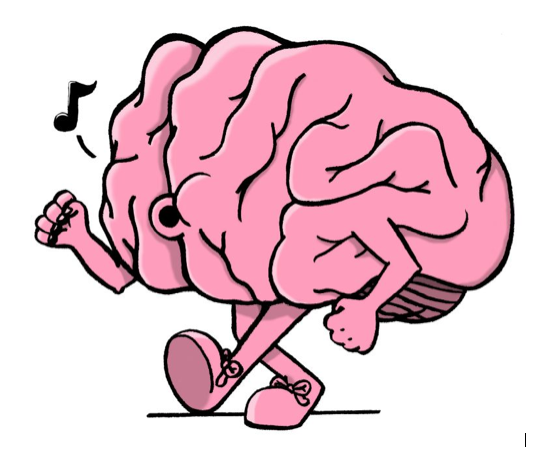Bifurcated Mind
Interestingly, the ancient yogis didn’t ascribe mental function solely to our brain. They noted the bifurcated nature of our mental functions: those we’re generally aware of (i.e., our conscious mind, evidenced by our thoughts and the voice in our head), and those we’re generally not aware of (i.e., our sub-conscious mind which silently “runs the ship”, typically evidenced by our actions).
Conscious Mind
We use our conscious mind to analyze and make decisions throughout each day (e.g., to decide what to wear, what to eat, how to do our job).
Our conscious mind functions the same way our heart and lungs do: single, consecutive, hopefully constant beats, breaths, and thoughts. Skeptical? Try simultaneously solving two simple math problems in your head – or simultaneously reciting the alphabet and counting. Right; it’s either one or the other. [This is the key to concentrating and meditating; it’s why mantra works: as long as we purposefully focus our conscious mind on something, we won’t hear the voice in our head or become distracted by other thoughts].
Five Types of Thought
Our conscious mind has five “gears”, capable of as many distinct types of thought, each of which may be affected by up to five “emotions” to varying degrees:
- Three of our conscious mental “gears” are evidenced by the three types of original thought: we either perceive something correctly, incorrectly, or we imagine it. Classic examples are we see a stick and recognize it as such; we see the same stick but mistake it for a snake – the classic example of an imaginary thought is a rabbit with horns, since it doesn’t exist outside one’s mind.
- Our fourth conscious mental gear is associated with memories – recalling a thought we’ve had previously.
- Our fifth gear is “neutral” (a relatively still conscious mental state in which we don’t hear words in our head). The easiest way to find neutral is to focus your attention on something you’re doing (a physical action or sensation – e.g., breathing, smelling, tasting, etc.). Admittedly, this is a state of observation rather than a thought per se – mechanically, it’s like a car idling in neutral.
Five Types of “Emotion”
Every thought can be affected by varying degrees by up to five “emotions”. The first emotion or influence gives rise to the other four. The first is not distinguishing between our perpetually functioning mind and our still, immutable consciousness (see below). When we identify with our thoughts rather than our awareness OF them, our thoughts are subject to four other influences: attraction, aversion, ego and fear.
Based on the bifurcated energetic nature of the world we live in (think yin/yang or positive/negative) we’re either drawn toward or away from something. When ego manifests consciously, we perceive ourselves in contrast to others, while fear, specifically of loss and dying, is natural.
Karma
The purpose of mind control is to mitigate the influence of these five “emotions” on our thoughts, so that the actions they trigger perpetuate balanced consequences. [Keep in mind the eternal nature of karma: every act gives rise to an endless sequence of consequences that beget others; the fact that you’re reading this is one consequence of literally everything that has happened since the beginning of time!]
Granted, we only have the ability to affect one of three types of karma (those generated by our own actions – as opposed to those generated by the actions of others, or the vagaries of nature), but it’s typically our own behavior including our reactions to the other two types that give rise to most of our personal mental distress.
Sub-Conscious Mind
The aspect of our mind that we’re generally unaware of has three progressively subtle functions: bodily tasks, memory storage, and individuality. Bodily function includes sensory perception, internal organ and system processing, and external mobility. Individuality refers to the root of our ego – the generally sub-conscious awareness that we are a unique being with needs (the “I am” part of “I am am tall, handsome, hungry, cold, etc.”)
Unlike our single-processing conscious, thinking mind, our sub-conscious “doing” mind multi-“tasks” wonderfully!
Consciousness
Distinguishing between our functioning mind and our immutable consciousness or awareness is the Holy Grail of Patanjali’s Yoga.
Here are a few things to keep in mind about what’s arguably the most significant aspect of each of us – ironically, the aspect we naturally pay the least amount of attention to.
In theory, without consciousness, our tangible physical body and invisible functioning mind would still work – we just wouldn’t know it!
The ancient yogis pointed out that this aspect of each of us is:
- Universal – yours is exactly like mine, though obviously what we’re each aware of is completely different;
- Omnipotent – this aspect of each of us is indestructible; it’s completely unaffected by the vagaries of time, space, hunger, temperature, you-name-it; the ancients used to say neither fire nor water (polar opposites) could destroy it;
- Omniscient – collectively, consciousness encompasses all knowledge;
- Eternal – your awareness hasn’t changed since the day you first opened your eyes, though obviously what you’re aware of changes every minute.
In short, realizing the distinction between our functioning mind, and our immutable consciousness – and recognizing the nature of the latter – gives rise to faith in the source of the latter; that which can’t be explained by science. The recognition that it’s inside you can literally change how you perceive and live your life.
Blessings, Skip




